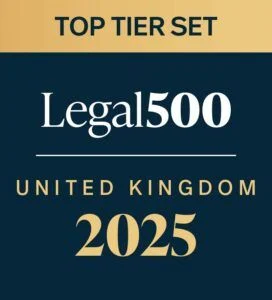Property Litigation column: MEES Regulations, EPCs and residential tenancies from April 2020
Mairi Innes discusses the MEES regulations and their applicability to existing tenancies from 1 April 2020
Landlords, tenants and practitioners will have already had to grapple with the Energy Efficiency (Private Rented
Property) (England and Wales) Regulations 2015 (SI 2015/962) (MEES Regulations) for some time. The MEES
Regulations, for those less familiar, were introduced to incentivise landlords to ensure their properties were energy
efficient following the EU Energy Performance of Buildings Directive 2010 (2010/31/EU). While some had hoped
that there would be change to the regime following Brexit in 2016, the MEES Regulations remain in force.
A particular issue to be aware of is the application of the MEES Regulations to domestic private rented property.
From 1 April 2018, landlords have been prohibited under the MEES Regulations from granting a tenancy of a
property which is “sub-standard”. However, changes came into force on 1 April 2020, from which point a landlord
was prohibited from continuing any existing tenancy of a property which is deemed to be sub-standard in accordance
with the MEES Regulations.
It is therefore important for all residential landlords urgently to assess whether the MEES Regulations apply to their
property and tenancy, and if so, whether any improvements are needed to the property.
The first issue to address is whether the property in question falls within the MEES Regulations. Domestic private
rented property (pursuant to section 42 of the Energy Act 2011) includes both assured tenancies under the Housing
Act 1988 and regulated tenancies under the Rent Act 1977, with exceptions where:
- The property is low-cost rental accommodation or low-cost home ownership accommodation under the
Housing and Regeneration Act 2008, or - The landlord is a body registered as a social landlord under the Housing Act 1996.
In addition, if the property is not required to have a valid energy performance certificate (EPC) and is not part of
a building required to have an EPC, then it does not fall within the MEES Regulations. Various properties are not
required to have an EPC, including, for example, very small stand-alone buildings with a total useful floor area of
less than 50 metres squared and residential buildings intended to be used for less than four months of the year.
A “sub-standard property” is defined as one where the “valid” EPC for that property falls below band E (regulation
22, MEES Regulations). An EPC is valid where it is the most recent EPC registered according to the Energy
Performance of Buildings (England and Wales) Regulations 2012 (SI 2012/3118) and it is no more than ten years old.
Any landlord whose property and tenancy falls into the MEES Regulations will therefore be in breach of those
regulations if the most recent EPC shows an energy performance indicator of F or G. However, there are exemptions
which a landlord can invoke to avoid liability for penalties. The exemptions are:
- Where a landlord has made all the relevant energy efficiency improvements for a property or where
there are no relevant energy efficiency improvements that can be performed. A relevant energy efficiency
improvement is defined in regulation 24 of the MEES Regulations. The definition includes a “cost cap” of
£3,500 where the cost of the improvements would be wholly or partly funded personally by the landlord.
Therefore, if no improvements can be done for less than £3,500 and no funding is available, the landlord can
rely on this exemption. An improvement will also not qualify as a relevant improvement where the landlord
can show that it is not an appropriate improvement due to its potential negative impact on the fabric or
structure of the property (the “wall exemption”). - Where the landlord, within the last five years, has not been able to obtain the necessary consent to be able to
undertake the improvements. This exemption includes where a tenant or third party has refused to consent
to the improvements, or where a tenant refuses to provide the necessary information allowing the landlord to
enter into a “green deal plan” to fund the improvements. - Where the landlord, within the last five years, has not been able to increase the energy performance indicator
in the property above the required minimum because to do so would result in a reduction of more than 5% in
the market value of the property. In order to establish this exemption, the landlord has to be able to provide
a report prepared by an independent surveyor. - Where the landlord has become a landlord not less than six months previously by reason of certain specified
circumstances, or the grant of a lease by order of the court. Those specified circumstances include the grant
of a lease pursuant to a contractual obligation and the deemed creation of a new lease by operation of law.
Where the landlord wishes to rely on an exemption, the landlord must register their exemption on the PRS
Exemptions Register which can be done online for no fee. The PRS Exemptions Guidance and the Domestic MEES
Guidance produced by the government details the evidence needed to register the exemption. That guidance treats
the high cost and wall exemptions as exemptions in their own right, although that is not what is specified in the MEES
Regulations and the guidance is of no legal effect. Unfortunately, there are a number of ways in which the guidance
is unclear, and reference should be had to the MEES Regulations themselves as well as the guidance in order to
avoid any pitfalls. Any landlord who registers false or misleading information on the PRS Exemptions Register can
be liable to financial penalties.
If the landlord cannot satisfy any of the exemptions, the landlord will have to choose between making improvements
to their property or rendering themselves liable to penalties under the MEES Regulations. The MEES Regulations do
not, however, create a positive obligation on either the landlord or the tenant to make improvements to the relevant
property. Nor does a property being sub-standard impact on the effectiveness or enforceability of the lease, either
from the perspective of a landlord or a tenant. An interesting point to note is that, as there has been no amendment to
the Assured Shorthold Tenancy Notices and Prescribed Requirements (England) Regulations 2015 (SI 2015 1646),
compliance with the MEES Regulations is not apparently a prerequisite for service of a section 21 notice on a tenant.
If a residential landlord continues to let a sub-standard property in breach of the MEES Regulations, they can be
liable for financial penalties to a maximum of £5,000 per breach. There is also a publication penalty, namely that the
enforcement authority can publish the name of the landlord (if the landlord is not an individual) and some details of
the breach on the PRS Exemptions Register. It remains unclear whether continuing to let a sub-standard property
counts as a “continuing breach”, so as to render the landlord continually liable for the aforementioned penalties.
The above summarises the relatively complicated framework that landlords will have to follow to avoid being
subjected to penalties from 1 April 2020. Moving forward, it will be key to include provisions in leases allowing the
landlord to carry out the necessary works, allocating the costs of those works between the landlord and the tenant,
and ensuring a tenant is not permitted to make any alterations which lower the energy performance indicator of
the property.
To download a PDF of the article please click on the link below


